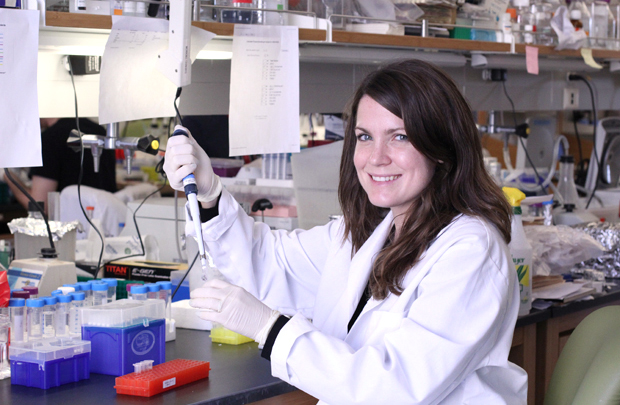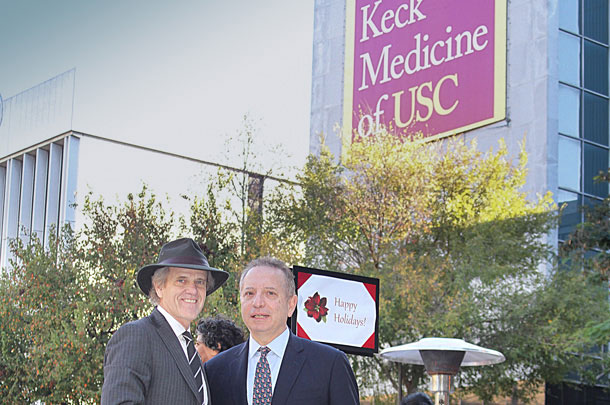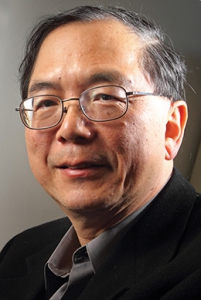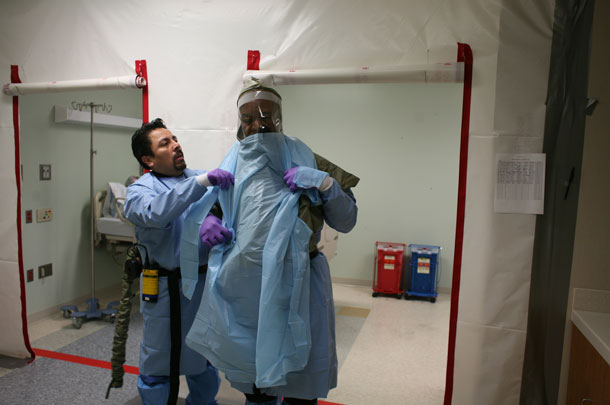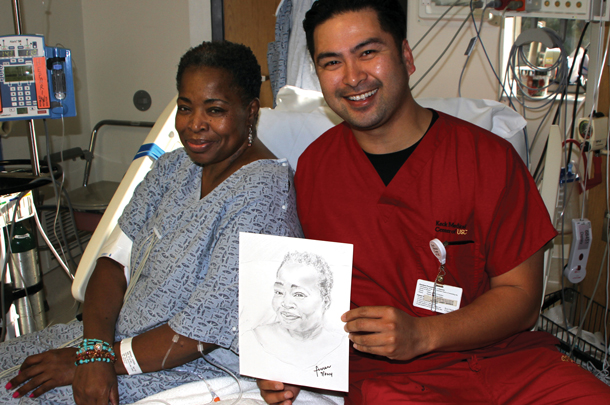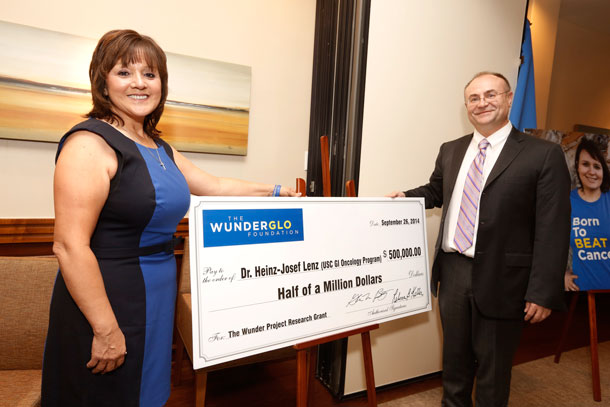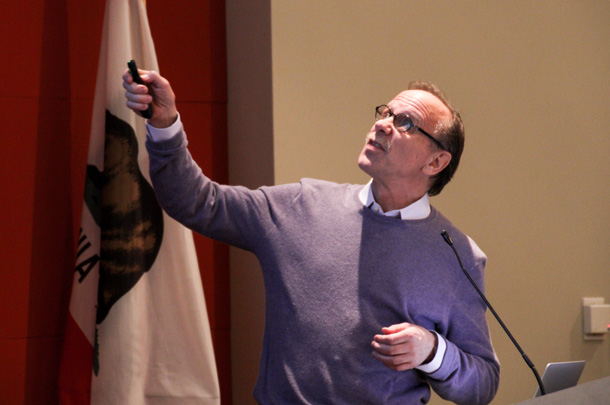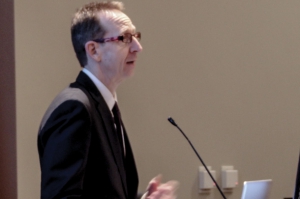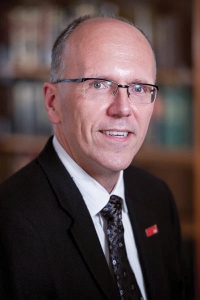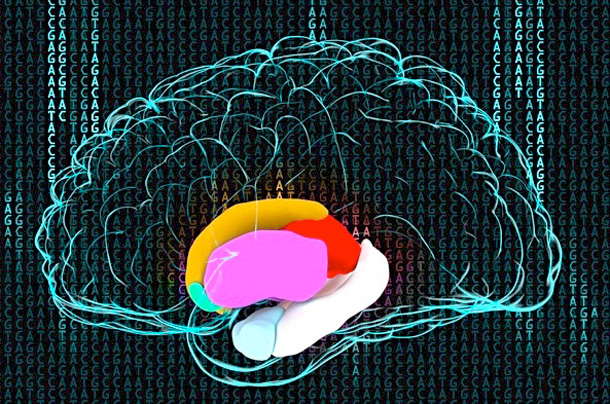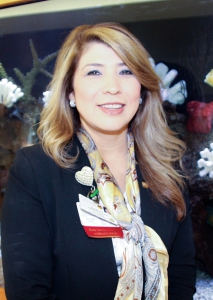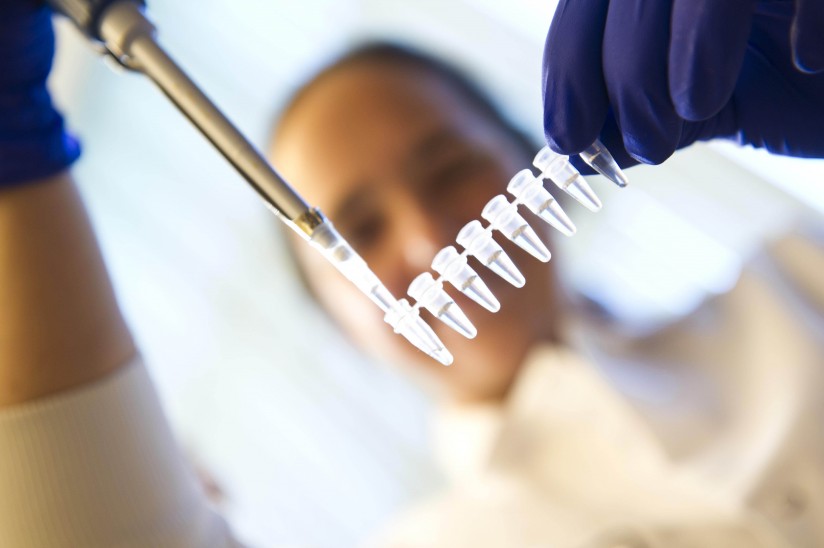![Keynote speaker Fred H. Gage of the Salk Institute discussed genetic material that can move from one part of the genome to another.]()
The inaugural USC Stem Cell Symposium convened with a straightforward truth about the future of regenerative medicine: “It will take a dedicated community of scholars across the disciplines to have maximum impact,” said Interim Provost Michael Quick, PhD.
The Jan. 16 symposium brought together precisely such a community, with speakers from USC’s schools of medicine, dentistry, gerontology and engineering, as well as the Saban Research Institute of Children’s Hospital Los Angeles (CHLA). Held at Aresty Auditorium at the Keck School of Medicine of USC, the event was hosted by USC Stem Cell, a collaborative and multidisciplinary effort bringing together more than 100 researchers and clinicians who work to translate discoveries into cures.
![Interim Provost Michael Quick opened the stem cell symposium.]()
Interim Provost Michael Quick opened the stem cell symposium.
“An important part of the future is how USC Stem Cell is going to engage other schools — in business, in public policy, in law — as this area of medicine becomes increasingly more involved,” said Andy McMahon, PhD, FRS, chair of the USC Stem Cell executive committee.
He shared his vision of engaging even more scholars from beyond the scientific realm. “So I’m looking forward to a future that embraces many more schools than are currently represented.”
McMahon also unveiled two new opportunities for young scientists to engage in collaborative and creative research projects:
The new USC Stem Cell Hearst Fellowship will support exceptional junior postdoctoral fellows pursuing stem cell research at USC. The USC Stem Cell Student/Postdoc Collaborative Challenge Grant Program will provide $10,000 to one-year research projects bringing together students or postdocs in two or more labs.
McMahon said, “Particularly, we’re interested in interdisciplinary projects that bring people together across different areas of research that tend to have boundaries. The idea is to stimulate new interdisciplinary research and to enhance the student’s or postdoc’s ability to be a creative and independent scientist.”
Collaboration underway among USC-affiliated faculty members is recognized by the USC Stem Cell Regenerative Medicine Initiative (RMI) Awards, which support multi-investigator research efforts. Three winning teams presented their progress in developing stem cell-based strategies to treat certain forms of deafness, bone defects and pediatric leukemia.
One of the day’s highlights was the keynote address by Fred H. Gage, PhD, who is the Vi and John Adler chair for research on age-related neurodegenerative disease at the Salk Institute for Biological Sciences and UC San Diego.
Gage discussed the concept of “mobile elements,” genetic material that can move from one part of the genome to another. When these mobile elements insert into neural genes, they may potentially alter behavior, enhance genomic diversity and even speed evolution.
Many USC Stem Cell principal investigators also shared recent research. At the end of the day, USC’s stem cell scientists left the symposium informed and inspired to translate discoveries into cures.
“It’s fantastic to see the diversity of different research that’s going on in the schools across USC,” said McMahon. “I very much look forward to meeting again next year.”
Here is a sampling of research shared at the symposium:
David Warburton, MD, of CHLA and the Keck School of Medicine addressed lung development and disease, and infant mortality in Ulaanbaatar, Mongolia, which has some of the world’s worst air pollution.
Paula Cannon, PhD, of the Keck School of Medicine talked about genetically modifying blood stem cells to cure HIV/AIDS.
Rong Lu, PhD, of USC’s stem cell research center discussed “barcoding” blood stem cells using a genetic label. This allows her to observe individual cells’ contributions to forming blood — determining potential strategies for better blood transfusions or bone marrow transplants.
Tracy Grikscheit, MD, of CHLA, the Keck School and the USC Viterbi School of Engineering explained how to help babies with injured or diseased intestine. She’s using discarded intestine from the operating room to regrow new intestine, which surgeons may someday reconnect to patient digestive tracts.
Senta Georgia, PhD, of CHLA and the Keck School shared a possible diabetes treatment: inducing intestinal stem cells to make insulin by “turning on” key genes.
Valter Longo, PhD, of the USC Davis School of Gerontology discussed clinical trials exploring fasting to improve chemotherapy outcomes in cancer patients and stimulate organ system regeneration in healthy patients.
Min Yu, MD, PhD, of USC’s stem cell research center and USC Norris spoke about using breast cancer cells from patients’ blood to identify mutated cancer strains and the right drugs to target them.
Alan S. Wayne, MD, of CHLA and the Keck School introduced immunotherapy for children with acute lymphoblastic leukemia. In a clinical trial, two-thirds of children experienced complete remission.
Michael Bonaguidi, PhD, of USC’s stem cell research center described how adult neural stem cells can generate either stem cells or neurons, offering a possible avenue for treating Alzheimer’s or other brain diseases.
Justin Ichida, PhD, of USC’s stem cell research center is testing drugs on neurons formed by reprogramming skin cells from patients with Lou Gehrig’s disease. He’s found drugs that keep neurons alive in petri dishes.
Ruchi Bajpai, PhD of the Ostrow School of Dentistry and the Keck School addressed why neural tube and craniofacial birth defects occur together in a genetic disorder called CHARGE syndrome.
David Cobrinik, MD, PhD, of CHLA and the Keck School discussed a childhood eye tumor called retinoblastoma, which he studies by creating retinal tissue from stem cells.
Megan McCain, PhD, of the Viterbi School of Engineering and the Keck School introduced the “heart on a chip.” To overcome the limitations of using laboratory animals or human cells in petri dishes to study disease, McCain engineers dynamic micro-scale mimics of human heart tissue.
Cheng-Ming Chuong, PhD, of the Keck School addressed how feather stem cells enabled the evolution of birds and how hair stem cells might enable the “extinction” of male pattern baldness.
Yang Chai, DDS, PhD, director of the Center for Craniofacial Molecular Biology at the
Ostrow School of Dentistry explored stem cells that can maintain tooth growth and other stem cells that might help babies with fused skulls that can’t grow normally.
— Cristy Lytal
